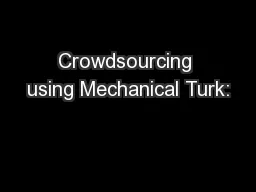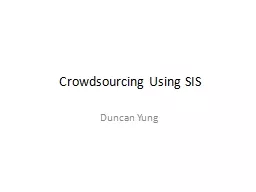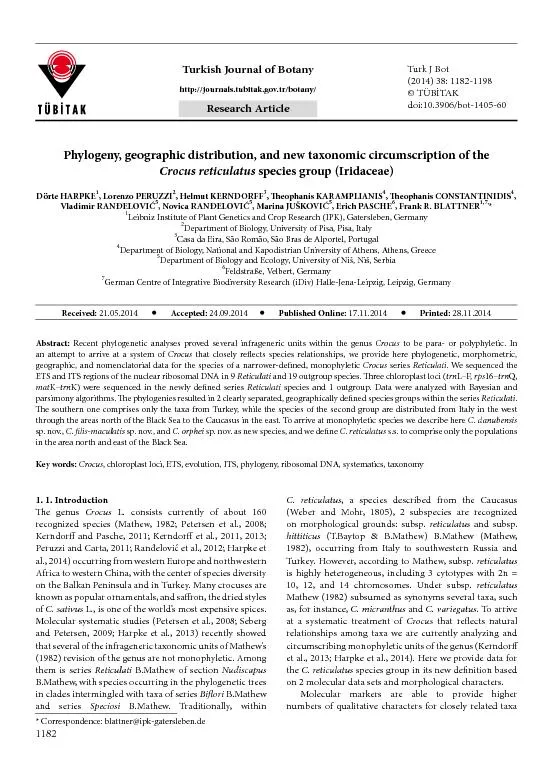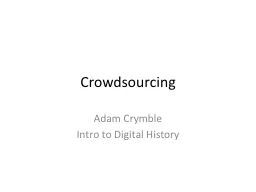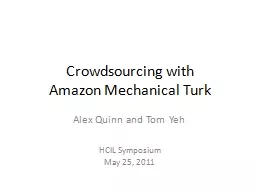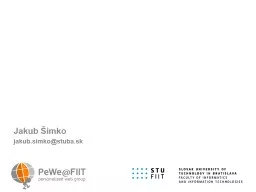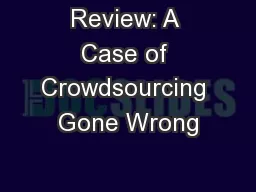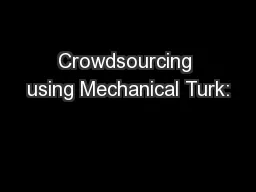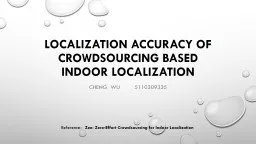PPT-Crowdsourcing using Mechanical Turk:
Author : lois-ondreau | Published Date : 2019-02-23
Quality Management and Scalability Panos Ipeirotis Stern School of Business New York University Joint work with Jing Wang Foster Provost Josh Attenberg and
Presentation Embed Code
Download Presentation
Download Presentation The PPT/PDF document "Crowdsourcing using Mechanical Turk:" is the property of its rightful owner. Permission is granted to download and print the materials on this website for personal, non-commercial use only, and to display it on your personal computer provided you do not modify the materials and that you retain all copyright notices contained in the materials. By downloading content from our website, you accept the terms of this agreement.
Crowdsourcing using Mechanical Turk:: Transcript
Download Rules Of Document
"Crowdsourcing using Mechanical Turk:"The content belongs to its owner. You may download and print it for personal use, without modification, and keep all copyright notices. By downloading, you agree to these terms.
Related Documents

